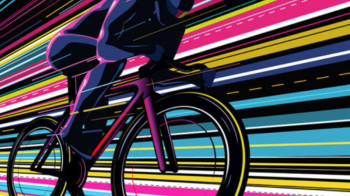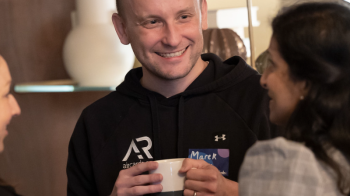Q&A: A responsible approach to brand safety
Posted on Wednesday 18 September 2024 | IAB UK
Following GARM’s closure, we put essential questions about how advertisers should approach brand safety to our ad tech experts
Brand safety is a subject that hasn’t strayed far from the spotlight since The Times’ landmark investigation in 2017. The development of transparency tools and shared standards has ensured progress in this space but, at the same time, the continued use of overzealous keyword blocking continues to disregard contextual factors and have a very real impact on online publishers.
With the demise of GARM, the brand safety issue is once more grabbing headlines as people question the viability of cross-industry collaboration in countering the brand safety challenge.
So what should advertisers be doing now? And what does a responsible approach to brand safety look like? Read on for our Q&A.
-
What do advertisers need to be aware of when it comes to effective brand safety?
Different advertisers will have different priorities and needs, so while brand safety is essential, advertisers need to marry the fundamental safety factors with steps to ensure brand suitability is also considered. Issues arise when brand safety is approached as a one-size fits all problem that can be solved with a one-size fits all solution. It’s this sort of thinking that leads to an over reliance on blanket and out-of-date keyword blocking, which disregards contextual factors and has a very real impact on publishers’ ability to monetise professional journalism.
Forge direct relationships with trusted verification partners, utilise the tools developed to improve viewability, adhere to cross-industry frameworks like the IAB Gold Standard and take a smart and contextually considerate approach to inclusion lists - without over relying on this step as a catch-all. A considered and curated brand safety strategy draws on technology to identify contextual and semantic factors and - crucially - is able to adapt and get ahead of changing risks as they emerge.
- Does the X/GARM case make industry collaboration in relation to brand safety impossible?
GARM’s closure has not only left advertisers feeling isolated, it’s also raised questions about the viability of cross-industry initiatives and standards in general. That makes it more important than ever that we - as an industry - continue to get behind these initiatives and coordinate efforts to address this shared challenge. It’s not about telling advertisers where to advertise, but providing impartial initiatives that give them confidence in where they’re investing. These frameworks create consistency across the supply chain and underpin effective self-regulation so it’s essential that we continue to build on this vital work. Read more from our CEO Jon Mew on this subject via The Media Leader.
- Can brands protect their reputation online and effectively achieve their marketing objectives?
Achieving your marketing objectives and protecting your brand reputation go hand in hand - if you fail at the latter you undermine the former. To put it simply, pumping out impressions is not worth the risk of delivering in the wrong place at the wrong time so ensure reputational factors are part of the story when it comes to measuring campaign success.
It’s also important to note that while we often talk about avoiding certain environments, a considered approach to brand safety and suitability also creates opportunities. Advertisers’ brand values are reflected in their media choices and so deciding what publishers and environments to actively support should be as much a part of the conversation as which ones to avoid.
- How should social media platforms uphold brand safety?
Upholding brand safety in a user-generated environment will always be more complex and social media platforms have grappled with this challenge. Most have established 24/7 safety systems to identify and remove content that violates rules and a number have banned individuals from having accounts for inciting online hate. It’s also integral that platforms can react quickly to evolving situations - such as the recent UK riots - to bolster their safety measures, remove content and employ independent fact-checking around posts.
When it comes to accountability, an example of good practice in my opinion is Meta’s Oversight Board - a cohort of independent people from all walks of life and institutions, spanning academics to policymakers to journalists, who ensure that Meta conforms strictly to its own policies when it comes to permitted content and addressing highlighted appeals from users.
- Who bears the primary responsibility for brand safety?
All players across the digital supply chain have a responsibility and a vital part to play in making the digital ecosystem safer. Advertisers ultimately have a primary interest in safeguarding their own brand, and they have the power to ensure they’re working with trusted, responsible partners who are adhering to good practice - which is such an important element of this. But that doesn't mean that the responsibility solely sits with advertisers. Brand safety is a shared issue and our industry’s ability to solve it - or at least minimise the risks - lies in being able to meaningfully collaborate and coordinate action.
- How can marketers effectively measure the success of their brand safety and suitability strategies?
Measuring the success of brand safety strategies lies in defining what success looks like for your brand - is this just about avoiding unsafe and unsuitable environments, or are you also incorporating how you’re proactively supporting specific publishers that align with and enhance your brand’s values? And is success also contingent on your ability to quickly react to evolving situations? Working with verification partners to establish the specific goals of your strategy and the appropriate metrics to judge it against - taking a holistic view across both campaign performance and brand health measures - is essential.
Related content
Gold Standard criteria expanded to include retail media & CTV for first time
Learn moreDespite GARM’s setback, look to Team GB cyclists to keep collaboration on track
Learn moreIAB UK opens industry consultation on Gold Standard developments
Learn moreIAB Gold Standard goes up a gear: what’s changed?
Learn more
Rediscover the joy of digital advertising
Champion connections instead of clicks. Capture audiences' imaginations, not just their attention. Boldly find your own beat instead of letting tech set the pace. It’s time to rediscover the joy of digital.



